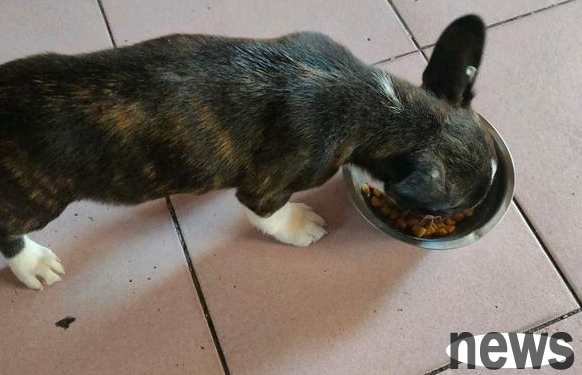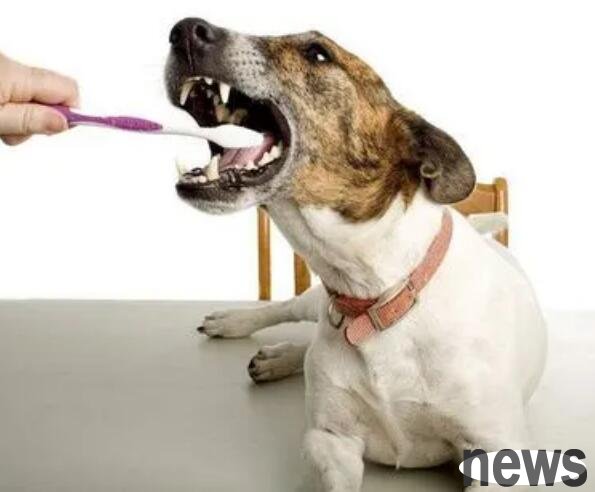What s wrong with a puppy turning his head? Symptoms and treatments for dogs turning their intestines
Dog intestinal resection refers to canine parvovirus disease. It is a highly contact-contagious disease in dogs. It is characterized by acute hemorrhagic enteritis and myocarditis in clinical practice. It is highly contact-contagious to dogs. Dogs of all ages can be infected. However, dogs that have just been weaned to 90 days old are more common and the condition is also serious. Some puppies suddenly have difficulty breathing and heart failure, and may experience myocarditis symptoms in a short period of time and die suddenly.

Symptoms of dogs turning intestines
1. Enteritis type: The incubation period of natural infection is 7 to 14 days. The initial symptoms of fever, the body temperature can reach more than 40℃, the mental state is depressed, the food is not eaten, and the vomiting is in the early stage, that is, it is mucus-like and yellow-green liquid. Diarrhea begins one day after the onset of the disease. At the beginning of the disease, the feces are porridge-like. As the disease progresses, the feces are tomato sauce-colored or brown, fishy and smelly, and the number of defecations is uncertain, and there are symptoms of severe internal and external dysfunction. After the bloody stool, sick dogs may show sunken eyeballs, dry nose mirrors, weak overall body, and significant weight loss. At the same time, pale conjunctiva and severe anemia can be seen. If this disease is not treated in time, it can cause toxin absorption and poisoning of intestinal contents, causing shock and coma to die.
2. Blood phase changes: the total number of red blood cells, hemoglobin decreases, specific volume decreases, and white blood cells decrease. The number of white blood cells in sick dogs can be as low as 60 to 90%. In the early stage, vomit is food, that is, mucus, yellow-green or blood-related. Diarrhea began to occur about one day. At the beginning of the disease, the feces are thin, and as the disease develops, the feces are bloody stools with brown or tomato sauce. The number of times increases in the future, the internal pressure becomes severe, and the bloody stool will have a special fishy smell. After a few hours of bleeding stool, the sick dog showed severe dehydration symptoms, with sunken eyes, dry nose, decreased skin elasticity and significant weight loss. For cases of severe intestinal bleeding, the corruption of the intestinal content can cause endotoxin poisoning and disseminated intravascular coagulation, causing the body to fall into shock and coma. If the dogs with enteritis type canine parvovirus disease can be treated in a timely and reasonable manner, the mortality rate can be significantly reduced.
3. Myocarditis type: It is more common in dogs around 40 days old, and the avatar symptoms of sick dogs are not obvious. Some suddenly have difficulty breathing, heart failure, and die in a short period of time. Some dogs can die after mild diarrhea.

Causes of dogs turning the intestines
Dog turning the intestines refers to canine parvovirus disease. It is a highly contact-contagious disease in dogs. It is characterized by acute hemorrhagic enteritis and myocarditis in clinical practice. It is highly contact-contagious to dogs. Dogs of all ages can be infected, but dogs who have just weaned to 90 days old have more diseases and are also more serious. Some puppies suddenly have difficulty breathing and heart failure, and may experience myocarditis symptoms and suddenly die in a short period of time. According to the types of clinically ill dogs, purebred dogs and foreign dogs have higher incidence rates than native dogs. This disease can occur all year round, but it occurs more frequently in winter and spring when the weather is cold. Sick dogs have the highest toxicity in feces.
Intestinal treatment for dogs
1. Early use of antibodies: high-free serum of canine parvovirus or rehabilitated dog serum. Treatment is performed using specific therapy. At present, the canine parvovirus monoclonal antibodies and parvovirus antiserum developed by multiple scientific research institutions in China. It can be used clinically and can achieve better therapeutic effects. The dosage of high-immunity serum is 0.5-1 ml/kg body weight, and the rehabilitation dog serum is 0.5-2 ml/kg body weight, immunoglobulin, 2-ligand king, powerful dog Kang, 2-ligand high-immunity serum, and canine parvovirus monoclonal antibody treatment. The earlier the clinical application, the better the treatment effect.
2. Symptom-based treatment: rehydration, stop bleeding, stop ejaculation, and prevent secondary infection. Symptom-based treatment can be performed by sugar saline, hemostatic sensitization, vitamin K1, vitamin K3, Weibang, Libang and sulfonamide drugs. Rehydration therapy: Sick dogs often die from dehydration, so rehydration is the main measure to treat this disease. Isotonic glucose saline was added with 5% sodium bicarbonate injection and given intravenous injection. The amount of fluid replenishment can be determined based on the degree of dehydration. 5-40 ml of 25% glucose solution, vitamin C2-10 ml, energy mixture 5-20 ml, slow intravenous drip once, 1-2 times per day. Rehydration should be determined based on the degree of dehydration and systemic condition of the dog, and the amount of rehydration should be determined. The general intravenous rehydration volume is 60 ml/kg body weight. During infusion, the infusion volume and infusion speed should be strictly controlled, and the functional status of the heart should be paid attention to, otherwise it will easily lead to treatment failure. When the sick dog shows severe vomiting and diarrhea, dehydration, electrolyte disorders and acid-base balance should be corrected. Intravenous injection of Ringer's Lactate solution 50-500 ml, 25% glucose solution 5-40 ml, and anisoposamine hydrochloride injection 0. 3-1 ml, 2 times per day.
3. Antibacterial and anti-inflammatory: Various broad-spectrum antibiotics can be used to prevent inflammation, and cephalomycin, ceftriaxone sodium, and clindamycin are used in the early stages of phosphate dyspathy. While using high-free serum, cardiac strengthening, fluid replenishing, anti-inflammatory, anti-shock, and strengthening care can be improved. But do not use it for a long time to prevent normal intestinal flora from being malfunctioned, which will delay the recovery of intestinal digestive function. Anti-toxic lyophilized powder and antitoxin No. 1 injection have good therapeutic effects on this disease. Generally, for dogs with less than 15 kg, 1 ampoule/day intravenous dripping powder, 2 ampoule/day for dogs with more than 15 kg, 2 ampoule/day. At the same time, No. 1 injection is used, 10-30 ml/day. Jili Yipian Ling (Zengfei Li Ning Tablet) is a broad-spectrum antibacterial and antiviral preparation that combines Chinese and Western medicines effectively and effectively extracted from a variety of traditional Chinese medicines, and has good therapeutic effects on this disease. Usage and dosage: Take 1 to 2 tablets per time for dogs weighing 2 to 4 kg orally, take 2 to 4 tablets for dogs weighing 5 to 10 kg, 1 to 2 times a day. The dose of diarrhea caused by the virus is doubled.
4. Antiemetic and bleeding: In case of severe vomiting, you can inject 0.3-2 ml of Emoer and Cat and Dog Spirit (Gain Fu An) in muscle.
5. Anti-shock: For those with obvious shock symptoms, 5-15 mg of dexamethasone (flumesone) or 0.3-1 ml of anisopamine hydrochloride injection.
6. Oral rehydration method: When a sick dog shows no food, his heart rate is accelerated, if he does not vomit, has appetite or desire to drink, oral rehydration salt can be given, and the dog can drink it freely or deep enema.












